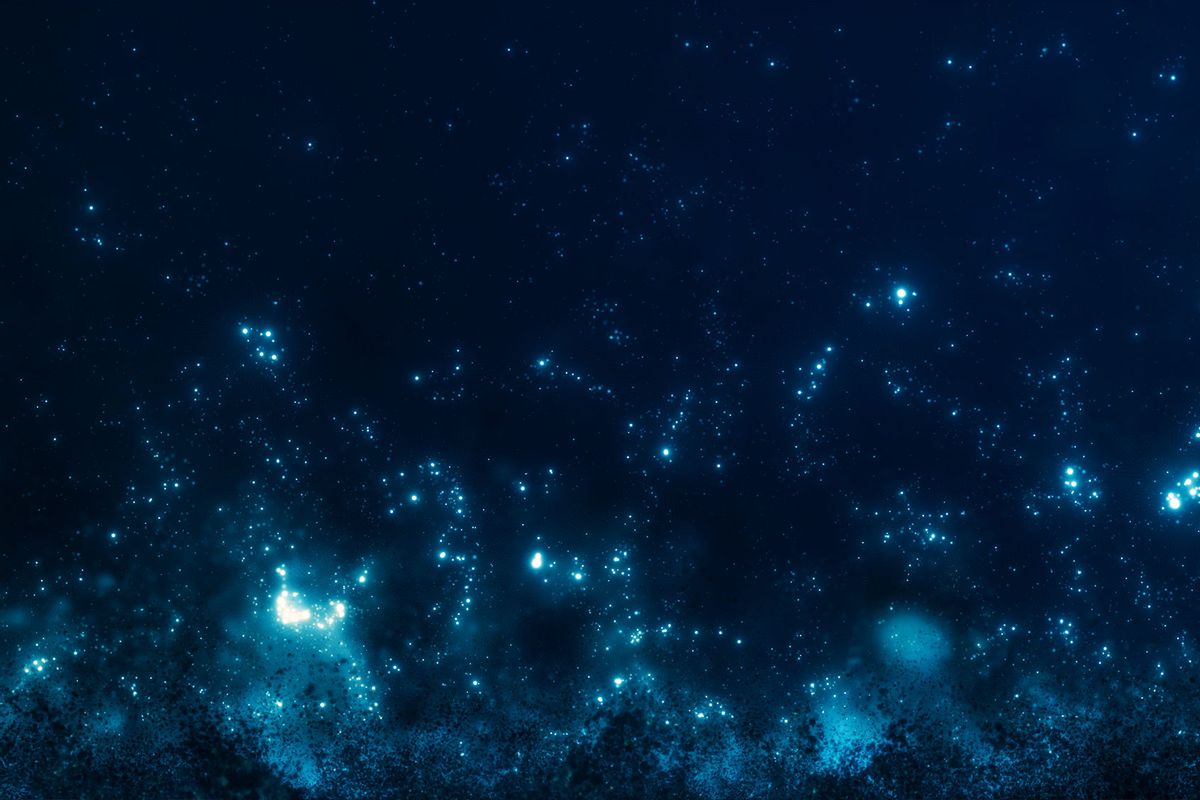Microbes are everywhere on Earth — in clouds in the sky, in the deepest holes ever dug in the Earth, and within and near volcanoes. There is virtually nowhere we've looked on Earth where we haven't found them. But the ones that live in extreme environment, such as places where the sun never touches, are especially intriguing because their biological processes are so unlike ours.
Now, new research in the journal Nature Microbiology inventoried chemosynthetic microbes at the bottom of the ocean and found that many more microbes thrived without sunlight than previously thought.
"The first life probably emerged in deep-sea vents using hydrogen, not sunlight, as the energy source."
For most life on Earth, we technically only have one source of food: the sun. Plants absorb sunlight and turn it into food for themselves, a process called photosynthesis. When animals eat plants, that energy moves up the food chain. Whether you eat meat or not, that energy that was first photosynthesized has traveled to you through different organisms.
But there are some weirdo organisms that don't eat via this chain of energy from the sun. Certain bacteria can generate energy from chemical reactions, a process called chemosynthesis (as opposed to photosynthesis). These reactions can create carbohydrates for the bacteria to live off of, even in completely dark environments deep under the ocean, in deep caves or the intestines of animals.
Yes, some of these creatures may even live inside of you! To give one example, Methanosphaera stadtmanae, one of the more rare little bugs in our guts, using acetate as its main source for carbon and giving off methane as a metabolic byproduct. (That means technically, farts come from the microbes, not you.) But M. stadtmanae is still somewhat mysterious. It has been implicated in inflammatory bowel disease, but also seems to trigger immune responses to help the body fight off infections. Scientists are still debating whether it's beneficial or harmful.
We have far more questions about chemosynthetic microbes in hard-to-reach areas like the deep ocean, but studying them can tell us a lot about the origins of life on Earth and potentially the future of life on this planet as well. In the Microbiology study, Dr. Rachael Lappan and Professor Chris Greening at Monash University in Victoria, Australia spent five years trawling the ocean, sampling the water and applying metagenomic sequencing, a technique used to census the genetic material of complex microbial communities, such as in soil or the gut.
They found the first evidence that carbon monoxide and H2, or hydrogen gas, is an important energy source for seawater microbes from the tropics to the polar ice caps, and that these bacteria were dominant in places where sunlight can't reach.
"Hydrogen and carbon monoxide in fact 'fed' microbes in all regions we've looked at: from urban bays to around tropical islands to hundreds of meters below the surface," Greening said in a statement. "Some can even be found beneath Antarctica's ice shelves."
The ubiquity of these microbes is not entirely surprising, but it is another example of why bacterial research is often neglected.
"The first life probably emerged in deep-sea vents using hydrogen, not sunlight, as the energy source," Greening said. "It's incredible that, 3.7 billion years later, so many microbes in the oceans are still using this high-energy gas and we've completely overlooked this until now."
Over time, microbes eventually figured out how to hack sunlight. This led to the evolution of algae, plants, animals, and eventually, us. Yet, we consider life that still exists in this "original" way — meaning, chemosynthetic — to be weird. We often call these microbes "extremophiles" (meaning "lovers of the extreme") because they like to hang out in environments with certain conditions pushed to the limit. Either highly acidic or supremely alkaline, very low or high temperatures, and so on.
Want more health and science stories in your inbox? Subscribe to Salon's weekly newsletter The Vulgar Scientist.
It's incredible that life finds a way to self-manage using even the most bare of resources. Some hydrogen or toxic (to us) gas leaking from a deep sea vent? These microbes say, "Yes, please! I will gladly eat that." But as Donato Giovannelli, an assistant professor at the University of Naples who studies extremophiles pointed out, humans are extremophiles in our own way. .
"Sometimes we call this organism extremophiles. But you know, if you think the other way around as human, we are the extremophile," Giovannelli said on the What is Life? podcast. "We like 21 percent oxygen, perfect 68 to 72 Fahrenheit temperature, normal pressure, otherwise, breathing becomes harder. So we have a very narrow set of conditions in which we like to live, like most mammals do. While the microbes are a lot more versatile."
Studying these weird microbes that don't use sunlight can teach us a lot about the ancient history of life and what makes animals like us so unique. But it's also a stark reminder of the limitations of humanity. We believe that humanity could wipe out all life on Earth using nuclear bombs or through self-destructive climate change. But despite our best efforts, most scientists predict we'd still miss a few bugs that thrive on radiation or can hide deep underground or in underwater caves. Although, for the sake of all life, we should probably aspire to avoid killing ourselves with nuclear winter and global warming — lest we leave behind a planet of microscopic, hydrogen-munching bacteria.



Shares